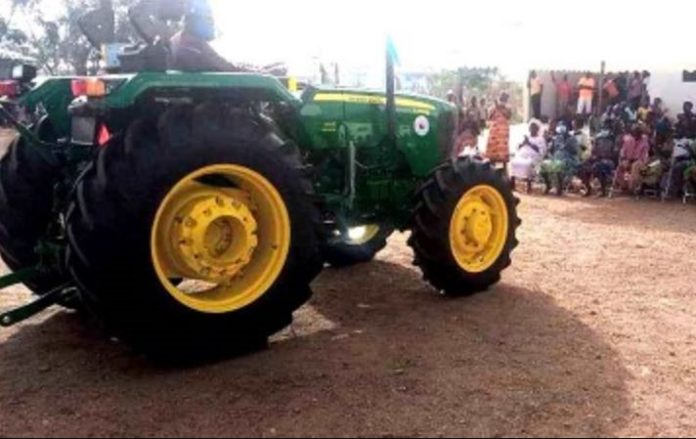The Korea International Cooperation Agency (KOICA) has presented a number of agricultural equipment to the government, in support of rice production in Ghana.
Presenting the equipment, the Senior Deputy Director of KOICA, Mr Seungmin Oh explained that the project was to improve rice value chain in the Central Region following a bilateral cooperation between the Government of the Republic of Korea and the Government of Ghana.
The machines included two tractors and accessories, a combine harvester, laser land leveler, seed drill/ no-till seed planter, 18 power tillers and accessories, two transplanters and 10 rice threshers.
The rest were 10 rice reaper binder combine harvesters, 18 rice winnowers, 30 water pumps, 18 grain moisture meters and 16 knapsack sprayers/ motorized mist blowers. The project was funded by Korea International Cooperation Agency (KOICA) and implemented in partnership with the Ministry of Food and Agriculture (MOFA).
Rice production
The districts set to benefit include Gomoa East, Assin Fosu, Assin North, Assin South and Twifo Att-Mokwa were currently benefitting from the project. Okyereko in the Gomoa East District has been designed for rice seed production whereas the remaining four districts produce paddy rice.
It formed part of a $8 million agreement signed between the South Korea and the Ghana towards improving capacity and rice seed development, provision of agricultural machinery and equipment, and the construction of a rice milling plant and agricultural equipment storage facility.
“Provision of the agricultural equipment, which is the key component of the rice value chain project, is important because it will promote government’s mechanisation drive with a manual and rudimentary rice farming,” said Mr Seungmin.
Mr Oh noted that, the machines would serve as valuable assets to beneficiary farmers in boosting rice production with potential to positively impact lives and livelihood of the farmers at the microeconomic level.









[…] source […]
Comments are closed.